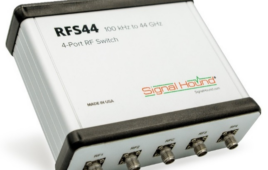Astronomy & Astrophysics is publishing a series of six articles presenting the results of the VLA-COSMOS 3 GHz Large Project. Led by researchers at the University of Zagreb, the team used the Karl G. Jansky Very Large Array (VLA) telescope to observe a two square degree patch of sky called the COSMOS field, for a duration of 384 hours. The astronomers obtained one of the clearest (highest angular resolution) and deepest (most sensitive) radio images ever produced over such a large region of the sky. In the radio ”skymap”, the team detected nearly 11000 galaxies. The new radio data have been combined with optical, infrared, and X-ray observations from worldwide leading telescopes.
Radio light is not blocked by the large clouds of interstellar dust that often resides in galaxies. This means that radio waves can be used to detect newborn stars within galaxies, as these stars are hidden at other wavelengths. The astronomers used the new survey to examine how the amount of radio light coming from a galaxy relates to the rate at which the galaxy is forming new stars. They also studied how this rate has changed over the history of the Universe. They found that galaxies produced the most stars when the Universe was about 2.5 billion years old, a fifth of its current age. During this period, about a quarter of all newborn stars were being created in massive galaxies. The astronomers also found that 15-20% more star formation was occurring in galaxies in the early Universe than was previously thought. This means that dust clouds are indeed likely to be hiding many newborn stars.
The new radio survey has also provided a unique insight into galaxies containing actively growing supermassive black holes in their centers. These galaxies are called active galactic nuclei (AGN). Matter orbiting around and falling into the black hole can release huge amounts of energy. Using the new radio data, the astronomers discovered more than 1000 AGN that appear to be “normal” galaxies at every other wavelength. Only their radio emission signatures betray their hidden black hole activity. These radio-detected AGN are particularly interesting as they may represent a population of AGN that can influence the eventual fate of their host galaxies. Physical processes associated with the feeding supermassive black hole may heat the gas in and around the galaxy, preventing the formation of new stars and halting the runaway growth of galaxies. The astronomers compared the AGN heating process assumed in cosmological simulations to what they detected in the new radio data. They found a strong similarity between the two. The quality of the new data allowed this test to be conducted out to a cosmic time at which the Universe was only about 2.5 billion years old.
The scientific findings of this new radio survey are important because they give more information about how and why galaxies have evolved since they were formed after the big bang up to the present day. This survey will also serve as the basis for large-scale, next-generation radio surveys, including the upcoming VLA Sky Survey (VLASS) and the planned surveys that will use the international Square Kilometer Array (SKA) telescope.




